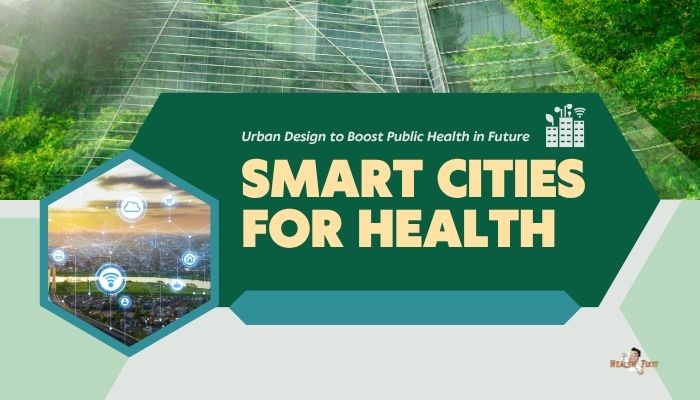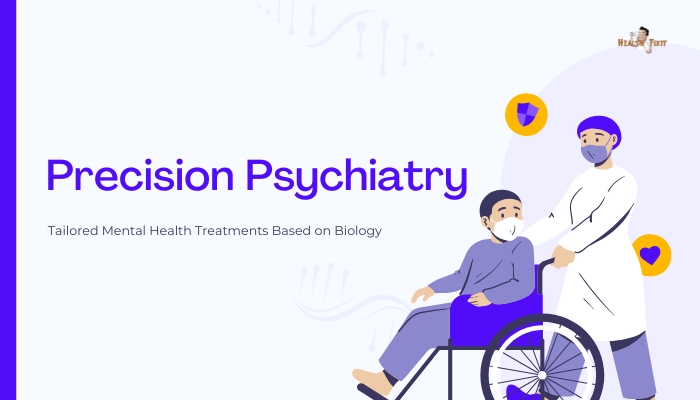Introduction
As cities worldwide become denser and more connected, public health priorities are rising to the forefront of urban design.
Smart city initiatives go well beyond traffic optimization and efficient energy grids; they also offer transformative ways to promote well-being.
From sensor-driven environmental monitoring to green corridors encouraging exercise and social interaction, emerging strategies may reshape how we live
breathe, and move in the near future. This article explores smart city design for health—why it matters, which technologies support it, and how future developments may forge healthier urban communities.
Why Smart Cities Matter for Health
Urban Challenges
Modern metropolises often struggle with air pollution, congestion, and limited greenspace—factors associated with respiratory illnesses
, stress, and obesity. Traditional infrastructure might lack real-time data on noise or emissions, leaving local authorities to make reactive, rather than preventive, decisions.
The Promise of Technology
Smart city frameworks integrate IoT sensors, data analytics, and citizen-facing apps to gather continuous feedback on environment and activity.
With actionable insights, planners and health professionals can shape policies that nurture safer, more active lifestyles—improving everything from day-to-day air quality to pandemic resilience.
Shifting from Treatment to Prevention
A hallmark of smart city health design is focusing on preventive measures. Clean, walkable streets, convenient public transit,
and minimized pollution can reduce chronic disease rates before they require medical intervention. This approach also reduces healthcare costs, creating more sustainable cities for the long term.
Designing for Walkability and Social Interaction
Pedestrian-Friendly Streets
Walkable spaces invite residents to ditch cars for daily errands, raising physical activity levels and decreasing emissions. Smart traffic signals may automatically adapt to pedestrian flows,
while wide sidewalks encourage safe foot traffic—even for mobility-impaired users. This environment spurs exercise and fosters neighborhood community ties.
Bicycle Infrastructure and Micro-Mobility
Bike lanes or scooter paths integrated into urban roads let people incorporate active transport into their routine.
Some cities deploy sensor-based “smart lanes,” adjusting signage or lighting for real-time safety.
Bike-sharing or e-scooter services, combined with convenient docking spots, reduce reliance on cars—a boon for cardiovascular health.
Social Hubs and Mixed-Use Zoning
Research links social connections to better mental and emotional well-being. Mixed-use developments (combining residential,
commercial, and recreational spaces) let residents walk to shops or cafes, spontaneously meeting neighbors. Such communal design fosters day-to-day social engagement—vital for mental resilience and reduced loneliness.
Sensors, Data, and Real-Time Monitoring
Air Quality Tracking
IoT-based air quality monitors placed on lamp posts or building facades deliver hyperlocal data on pollutants like PM2.5 or NO₂.
City apps can alert vulnerable populations (e.g., asthmatics) to avoid high-exposure zones at certain hours. This knowledge also guides policy (like traffic restrictions) in real time.
Noise and Light Pollution Controls
Excess noise or glaring light disrupts sleep and triggers stress. Smart city sensors measure decibels or lumens
, enabling dynamic adjustments—lowering streetlight intensity late at night or fining areas with persistent noise violations. This approach fosters more restful, less disruptive environments.
Infectious Disease Surveillance
During outbreaks, some cities leverage “smart sewage” analysis or aggregated wearable data to spot rising fevers or virus loads
. Anonymized tracking can identify hotspots early, enabling targeted interventions—like ramped-up testing or localized quarantines—and preserving general health service capacity.
Green and Blue Spaces
Parks as Urban Lungs
Ample green space is linked to reduced stress, lower urban heat, and better air quality. Smart irrigation systems keep lawns and trees healthy with minimal water waste, while IoT sensors track foot traffic to plan maintenance or expansions.
Waterfront Revitalization
Rivers, lakes, or coastline areas can become communal wellness corridors if properly developed. Smart flood monitoring ensures safety
, while pedestrian promenades encourage exercise and recreational activities—like kayaking or open-water swimming, all fosters better physical and mental health.
Urban Farming and Food Access
Vertical farms or community gardens integrated into neighborhoods improve fresh food availability, tackling “food deserts.” Some cities experiment with sensor-laden hydroponic systems on rooftops, distributing produce at local markets, fostering healthier diets.
Overcoming Barriers
Implementation Costs
Deploying citywide sensor networks or revamping infrastructure requires significant investment. Partnerships with private tech firms, government grants, or philanthropic funding can offset expenses. Demonstrating long-term health savings is key for buy-in.
Data Privacy and Governance
Capturing real-time data on movement or environment can inadvertently track individuals. Clear policies—limiting personal data usage, ensuring anonymity, and offering public transparency—are crucial to preserve trust and comply with data-protection laws.
Equity and Accessibility
Smart city improvements must benefit all citizens, not just privileged neighborhoods. Designing inclusive, accessible public spaces, ensuring low-income areas also gain sensor coverage, and prioritizing mobility for diverse populations fosters health equity.
Future Outlook: Integration and Personalization
Personalized City Experience
As more data merges with personal health records (with consent), city apps might recommend the best walking route based on your specific health goals or real-time pollution patterns. Cross-referencing your wearable device with city-level data personalizes daily living further.
Global Collaboration
Cities worldwide can share success stories—like how some Asia-Pacific cities drastically improved air quality with integrated sensor data guiding vehicle restrictions. Open exchange fosters breakthroughs that shape global best practices in healthy urban design.
AI-Driven Decision Support
Advanced machine learning might forecast disease outbreaks, heat waves, or smog episodes. Early warnings enable immediate city-level interventions—like opening more cooling centers, adjusting public transport capacity, or alerting residents to practice protective measures.
Practical Advice for Planners and Citizens
- Engage Communities: Involve local residents in planning processes, ensuring new tech meets real health needs and fosters acceptance.
- Integrate with Healthcare: Smart city data should feed public health research and clinical insights, bridging environmental exposure with population health outcomes.
- Promote Active Living: Encourage safe walking paths, ample cycling lanes, and convenient public transit. Educate citizens about the benefits and use city apps to track progress.
- Champion Privacy: Implement strict data governance from day one. Transparent policies build trust and let citizens opt into or out of certain data collection.
Conclusion
Smart city designs that prioritize health can transform daily living—from cleaner air to accessible green areas,
robust monitoring for disease prevention, and frictionless “walkable” communities. By embedding sensor networks and forging synergy between urban planning, healthcare,
and technology, we can craft environments where well-being thrives. While challenges exist—cost, privacy,
equitable access—innovative cities are blazing trails that others can follow. As these solutions mature, it’s increasingly likely that the city of tomorrow will double as a holistic caretaker, quietly orchestrating a healthier urban life for everyone.
References
- World Health Organization. Urban green spaces and health: A systematic review. 2016.
- Nuwais M, He LF, Nguyen J, et al. IoT-based solutions for health-oriented smart cities: a critical review. Sensors. 2020;20(20):5726.
- Riva G, et al. Behavioral and psychological effects of urban design. Front Psychol. 2021;12:600468.
- Geisler B, Meir I. The intersection of walkability and public health: a meta-analysis. Int J Environ Res Public Health. 2021;18(2):435.
- Hale T, Angrist N, Cameron-Blake E, et al. Government response to COVID-19 and the role of technology-driven surveillance. Lancet Digit Health. 2021;3(2):e93–e97.
- Shah R, Pasco RF. The impact of data privacy regulations on smart city sensors. J Inf Policy. 2020;10:121–137.
- de Leeuw E, Green G. Embedding health in urban design. Cities Health. 2019;3(1-2):1–11.
- Song Y, Merati M, et al. Sensing, analytics, and IoT architecture for healthy smart cities. Comput Commun. 2020;150:236–252.
- Sharifi A, Khavarian-Garmsir AR. The COVID-19 outbreak and urban resilience: reflections on sustainability. Cities. 2020;105:102761.
- Gascon M, et al. Physical and mental health impacts of urban green spaces. Urban For Urban Green. 2016;16:371–379.






